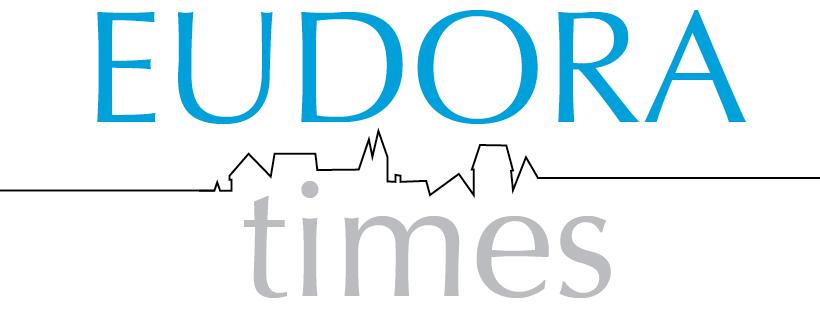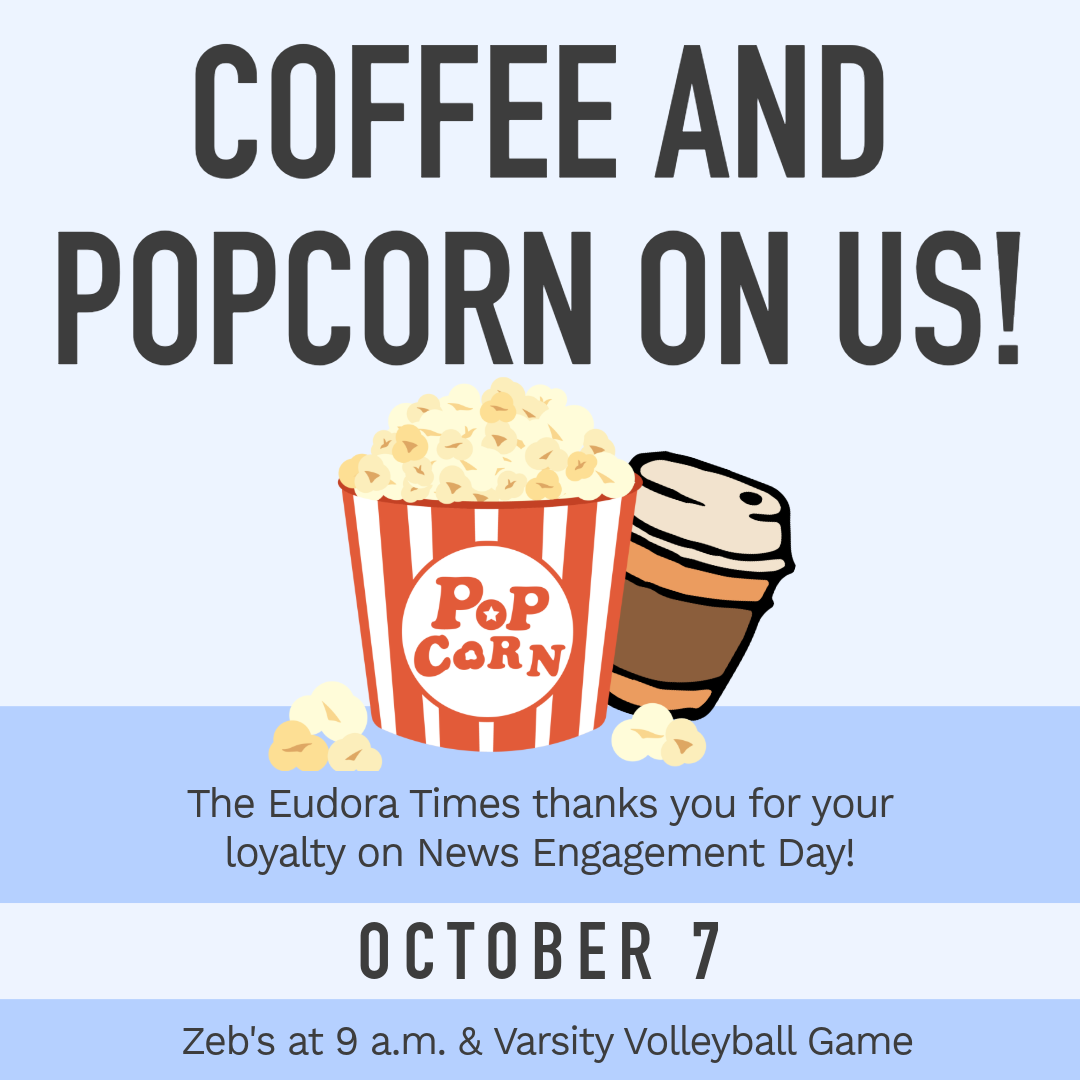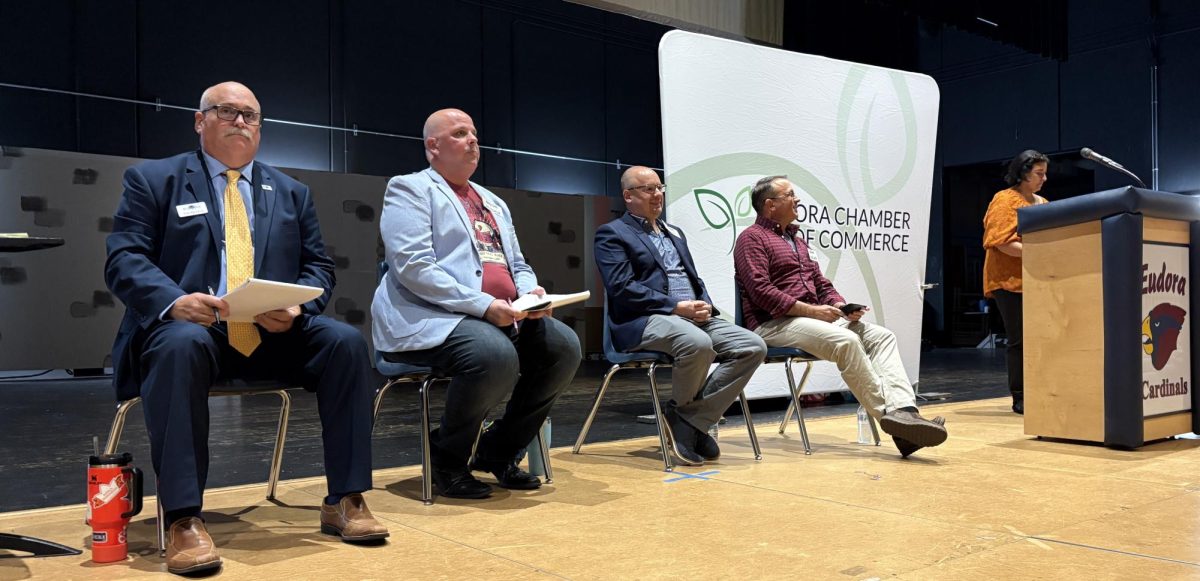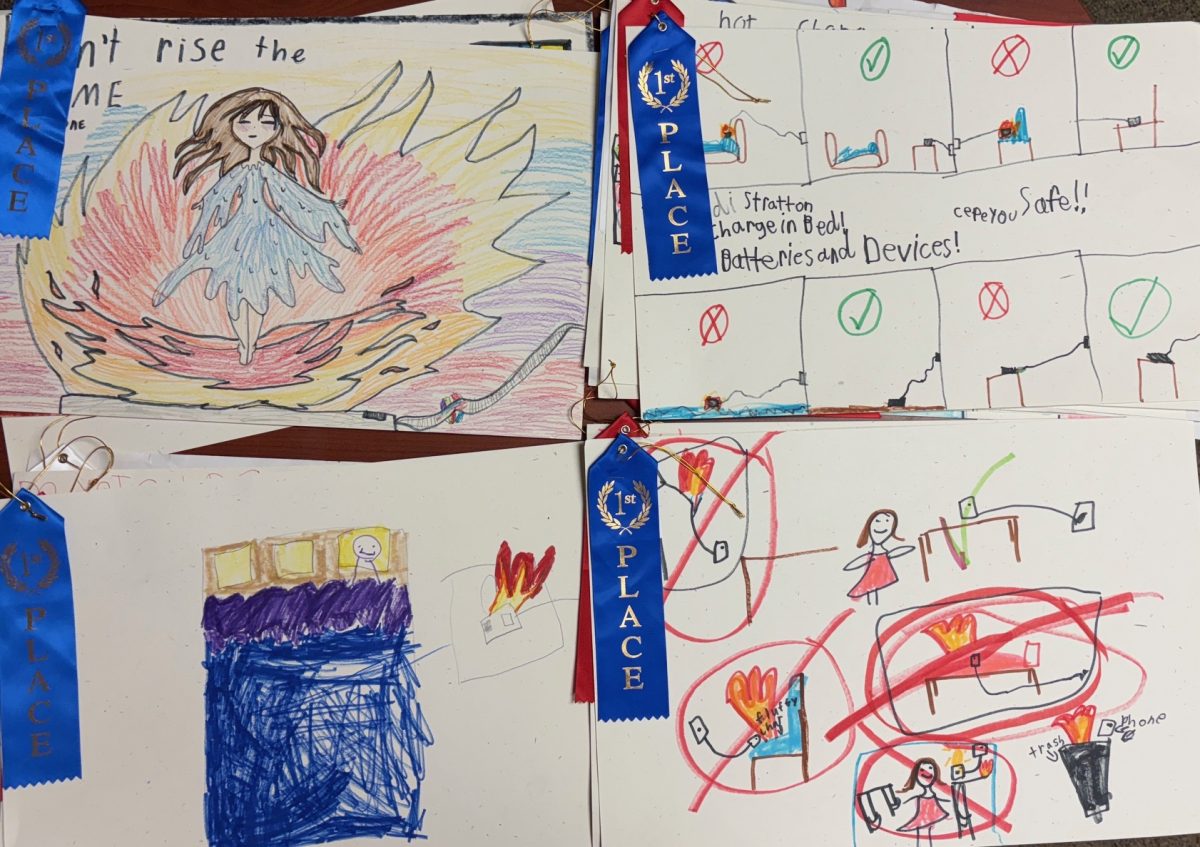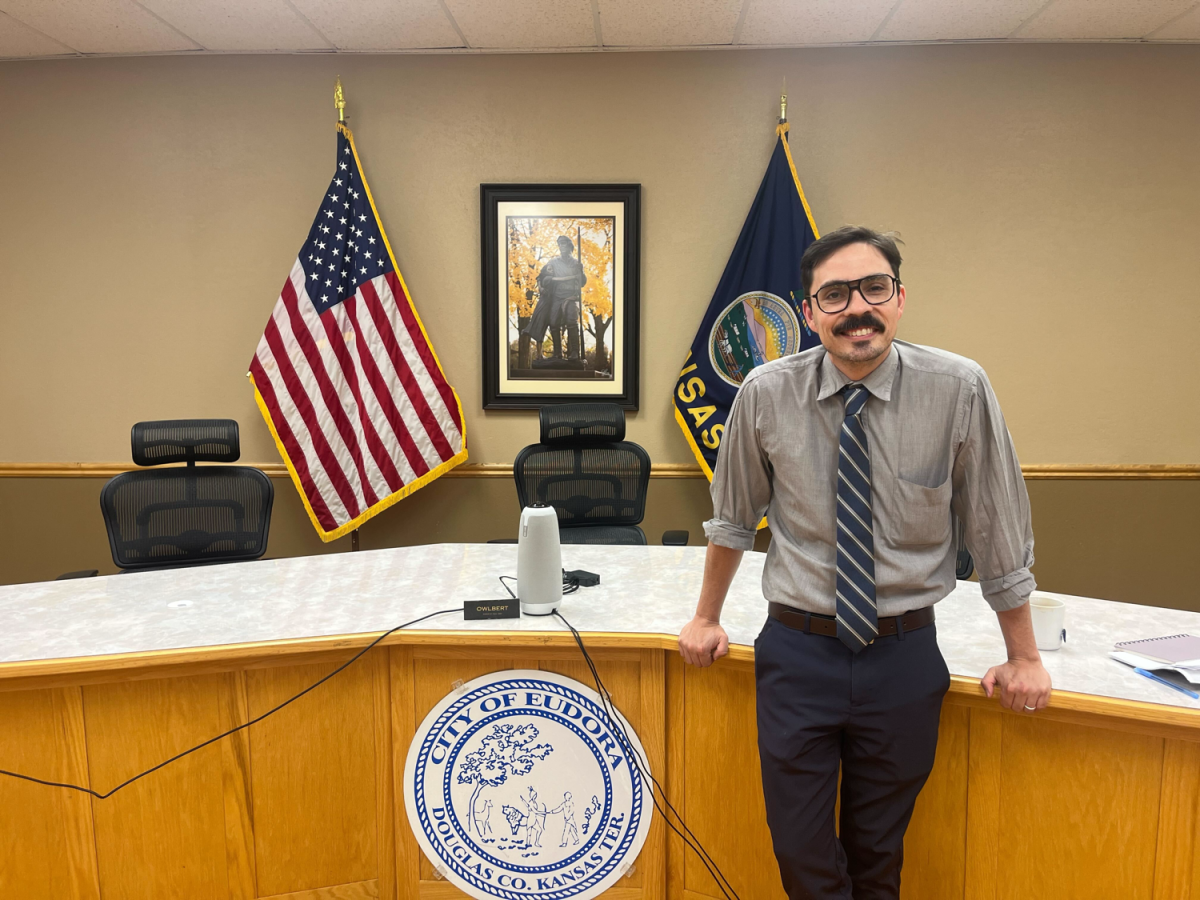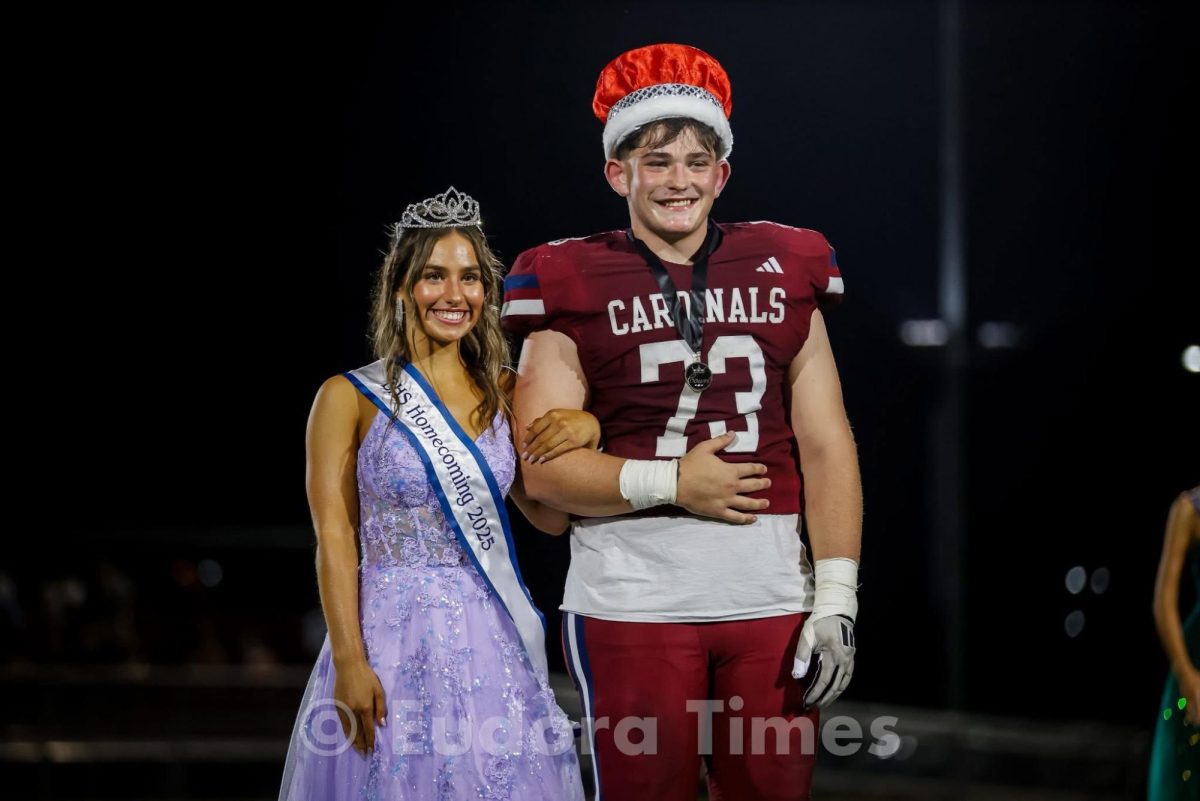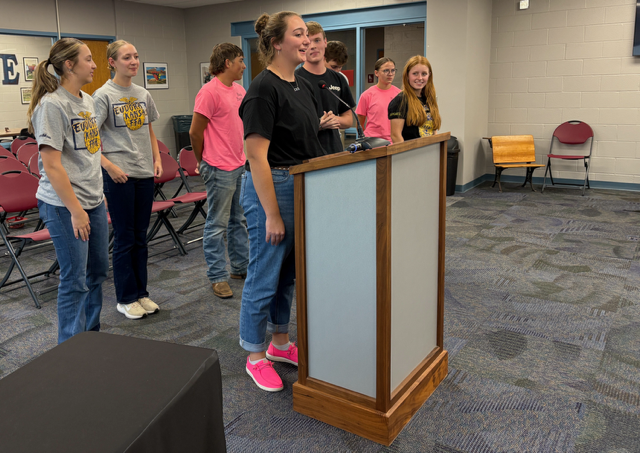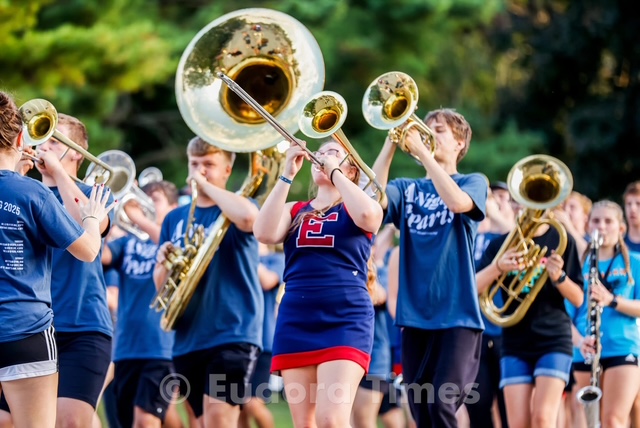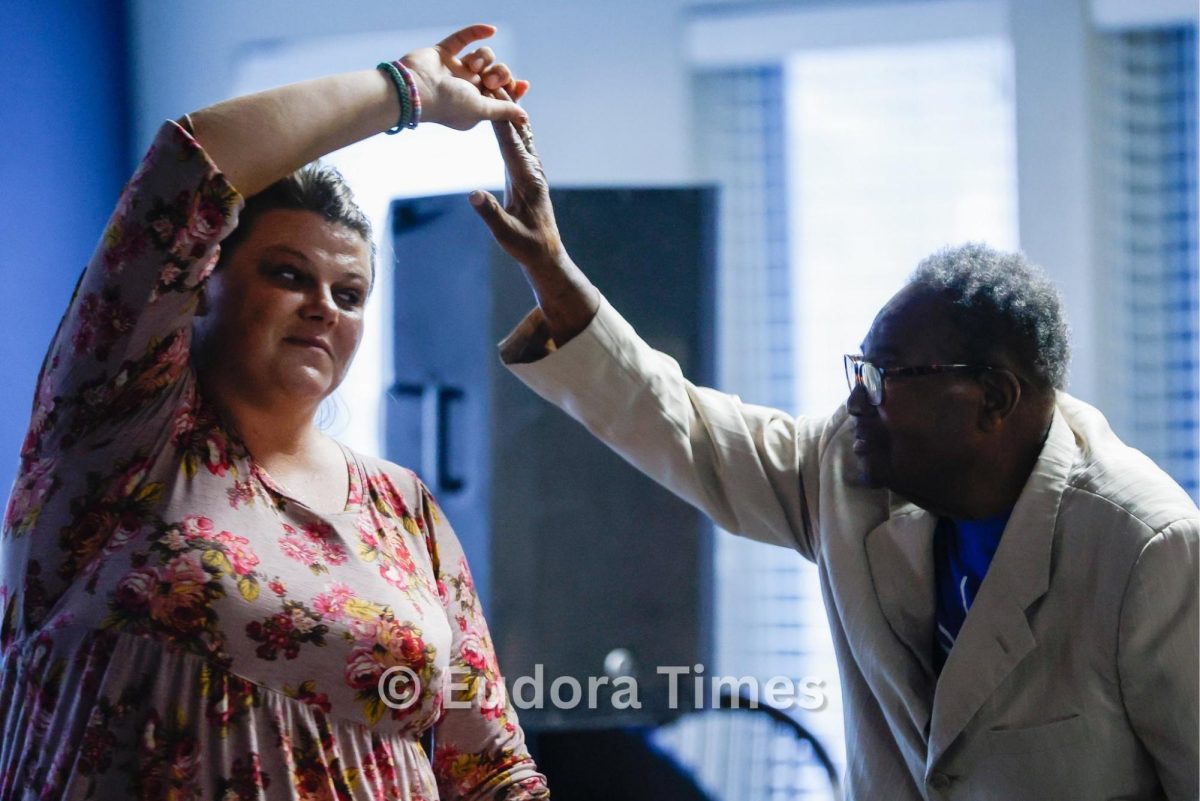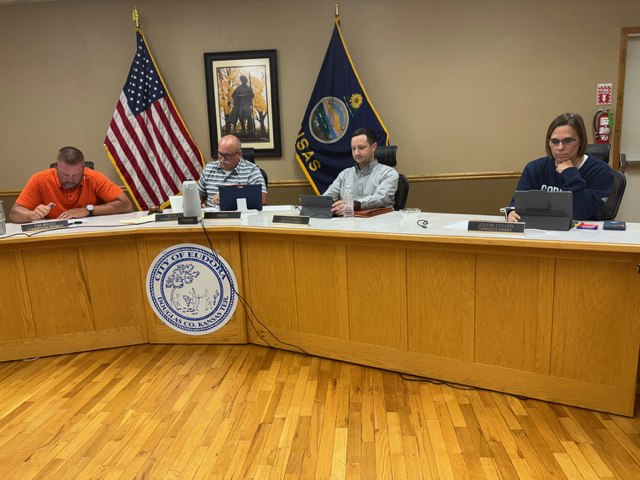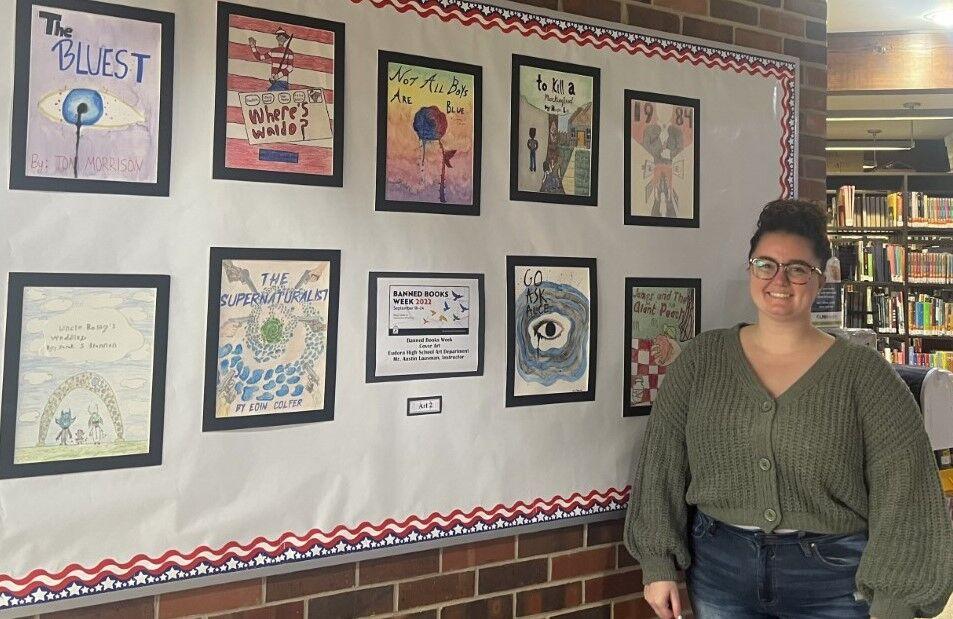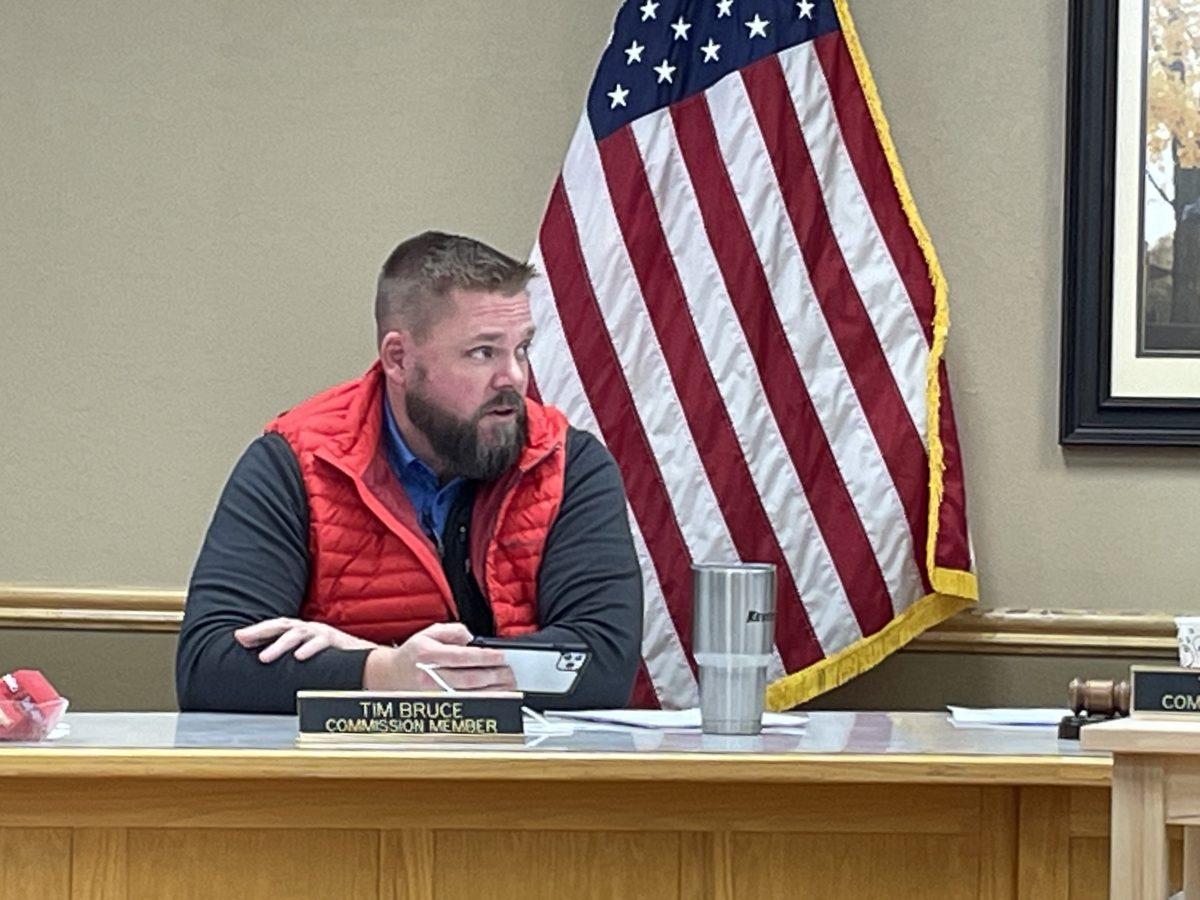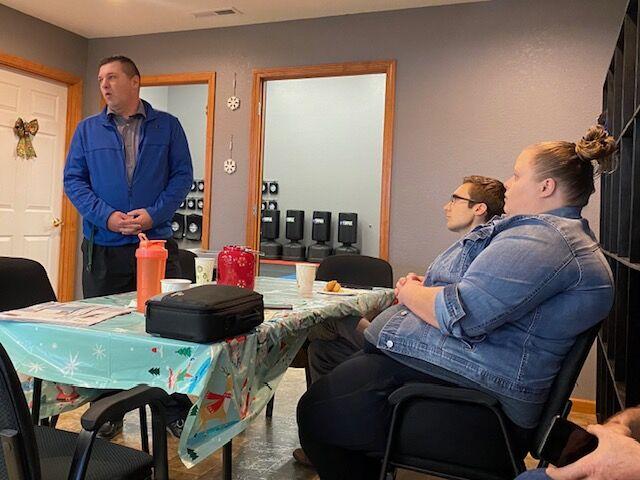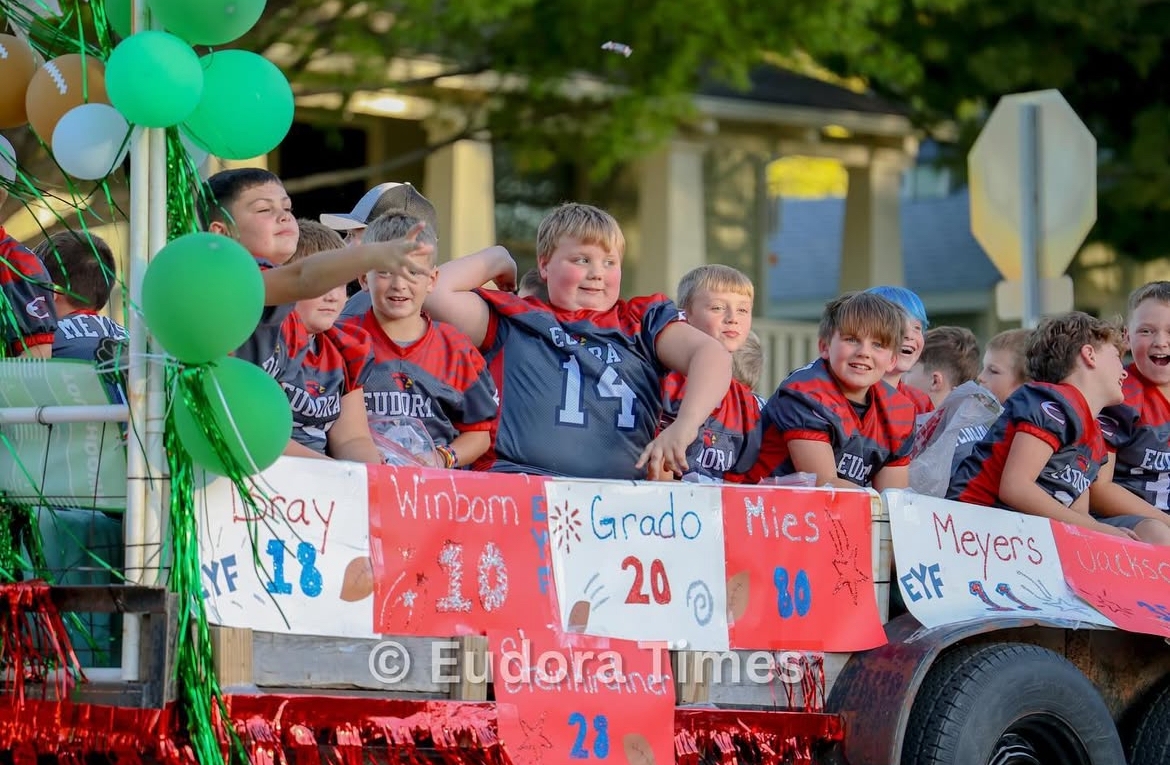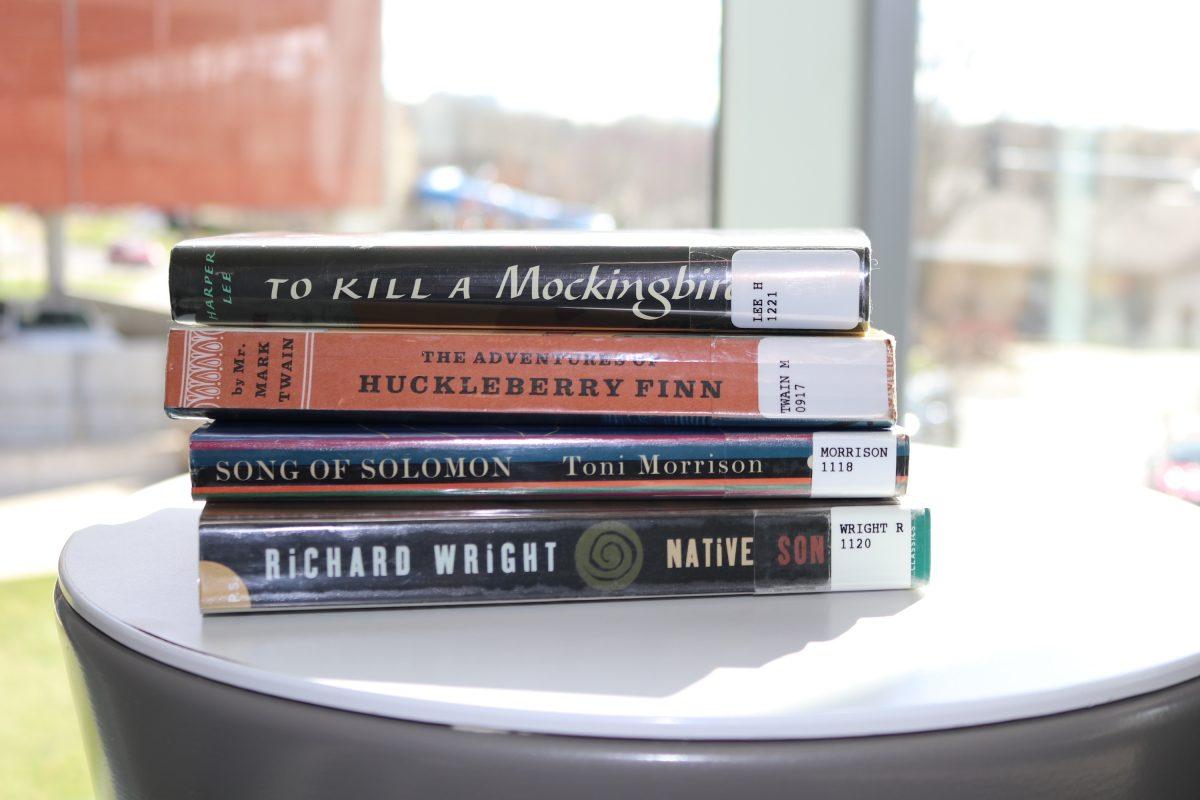The number of books challenged in 2022 is set to exceed last year’s record, making awareness of Banned Books Week more pressing for libraries this year.
The Eudora library has once again partnered with high school students in the Art 2 class to feature an exhibit of banned book covers recreated in students’ own creative sense based on their research.
Art teacher Austin Lauxman said the purpose of the project is to educate students on these novels as well as push them to be creative in their own interpretations.
Lauxman has encouraged students to embrace the freedom of researching and choosing their book covers, allowing them to take their own creative directions.
This year’s national theme is “Books unite us, censorship divides us.”
Student Colin Howton chose to complete his project on “James and the Giant Peach.” The children’s novel by Roald Dahl has been banned over the years due to claims it’s inappropriate for children because of a scene where a spider licks its lips that was argued to be in reference to a sexual innuendo.
“The reason that I would expect it to be banned was for, if you think about it, it’s just a very dark-ish story,” Howton said. “Yeah, just like an example of why it was banned was for its description of like Mrs. Spider smacking her lips and their jaws may be moist.”
Howton said his research included rereading parts of the novel and researching all of the reasons why it could have been banned. He said he understood how certain references could appear to be crossing the line, but ultimately doesn’t believe a novel like this would be banned in today’s world.
Books related to racism, sexuality and gender identity are challenged the most nationwide. The American Librarian Association reported 681 attempts to ban or restrict library sources between January and August this year, with more than 1,600 books challenged in those attempts.
This is on track to be the highest number of attempted book bans in a year since the association began tracking 20 years ago.
“The unprecedented number of challenges we’re seeing already this year reflects coordinated, national efforts to silence marginalized or historically underrepresented voices and deprive all of us – young people, in particular – of the chance to explore a world beyond the confines of personal experience,” Lessa Kananiʻopua Pelayo-Lozada, the association’s president, said in a statement.
The banned books exhibit will be up at the Eudora library throughout the week.
Children’s librarian Montana Frehe said showcasing these banned books from the past is important in order to understand why they had been banned in reference to their time period.
“It’s good to read the books that have been banned to get a broad spectrum of everything that’s happened in the past,” she said. “It educates them and it educates us, so it’s really good to read the banned books. That’s why we encourage them and have them on display and do the banned books gallery.”
These were the 10 most challenged books nationwide last year, according to the American Library Association:
-
“Gender Queer,” by Maia Kobabe
-
“Lawn Boy,” by Jonathan Evison
-
“All Boys Aren’t Blue,” by George M. Johnson
-
“Out of Darkness,” by Ashley Hope Perez
-
“The Hate U Give,” by Angie Thomas
-
“The Absolutely True Diary of a Part-Time Indian,” by Sherman Alexie
-
“Me and Earl and the Dying Girl,” by Jesse Andrews
-
“The Bluest Eye,” by Toni Morrison
-
“This Book Is Gay,” by Juno Dawson
-
“Beyond Magenta,” by Susan Kuklin
Reach The Eudora Times at [email protected].
Children’s librarian Montana Frehe showcases this year’s banned book covers created by high school students.
